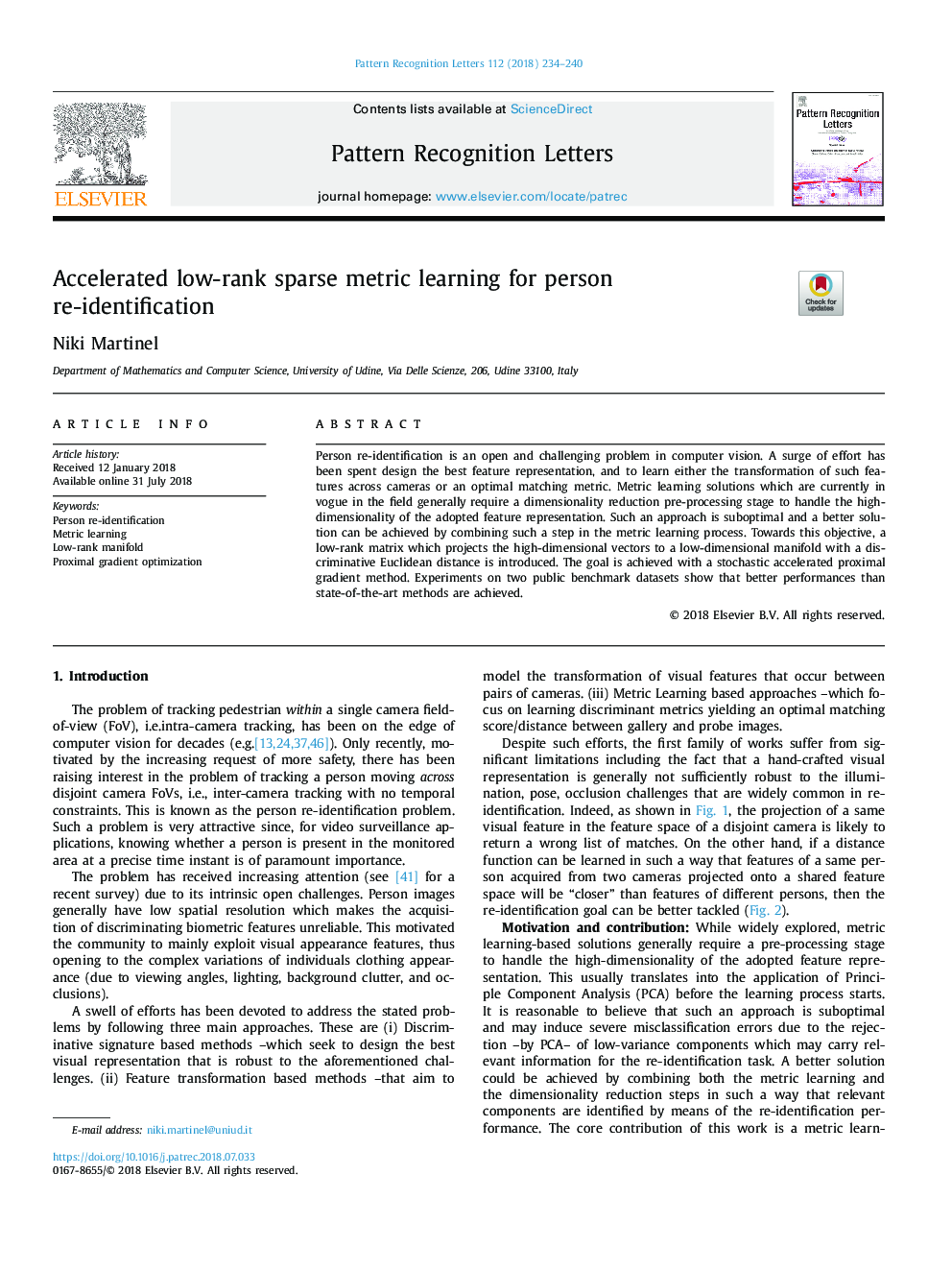| Article ID | Journal | Published Year | Pages | File Type |
|---|---|---|---|---|
| 6940162 | Pattern Recognition Letters | 2018 | 7 Pages |
Abstract
Person re-identification is an open and challenging problem in computer vision. A surge of effort has been spent design the best feature representation, and to learn either the transformation of such features across cameras or an optimal matching metric. Metric learning solutions which are currently in vogue in the field generally require a dimensionality reduction pre-processing stage to handle the high-dimensionality of the adopted feature representation. Such an approach is suboptimal and a better solution can be achieved by combining such a step in the metric learning process. Towards this objective, a low-rank matrix which projects the high-dimensional vectors to a low-dimensional manifold with a discriminative Euclidean distance is introduced. The goal is achieved with a stochastic accelerated proximal gradient method. Experiments on two public benchmark datasets show that better performances than state-of-the-art methods are achieved.
Related Topics
Physical Sciences and Engineering
Computer Science
Computer Vision and Pattern Recognition
Authors
Niki Martinel,
